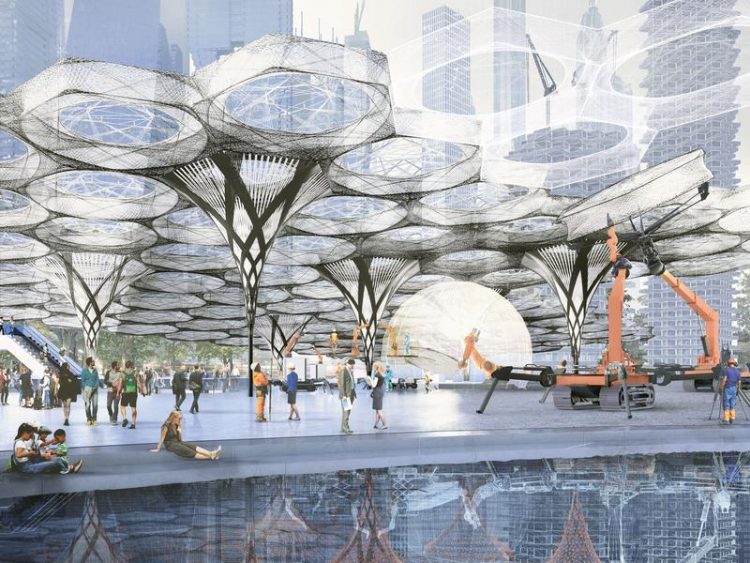A new way of thinking for the built environment

The cluster of excellence “Integrative Computational Design and Construction for Architecture” aims to lay the methodological foundations for a comprehensive modernization ofthe building sector. University of Stuttgart/ICD
New buildings will need to be constructed for an additional 2.6 billion people worldwide over the next 35 years. Yet the productivity of the building industry has been stagnating for decades, and even today construction accounts for more than 40 percent of the world’s resource and energy consumption.
New approaches for design and construction are urgently required. Digital technologies make it possible to address these challenges in novel ways. However, their adoption is very slow and typically only focused on isolated aspects of the building process due to the fragmented nature of the building industry and a compartmentalised research culture.
The cluster of excellence aims to rethink design and construction based on a integrative computational approach. Cluster spokesman Prof. Achim Menges, Head of the Institute for Computational Design and Construction at the University of Stuttgart, speaking about the aims of the cluster, says “Architecture is of central importance for our society.
However, the building sector faces enormous ecological, economic and social challenges. We aim to harness the full potential of digital technologies through an integrative and interdisciplinary research approach, in order to create the methodological foundations for groundbreaking innovations and sustainable, future design and construction.”
A key objective is the development of an overarching methodology of the “co-design” of methods, processes and systems, based on interdisciplinary research between the areas of architecture, structural engineering, building physics, engineering geodesy, manufacturing and systems engineering, computer science and robotics, humanities and social sciences.
The Cluster aims to push the use of digital technologies in the building sector beyond the mere optimization of established processes and systems towards new, game-changing approaches for computational design, robotic construction and related building systems.
The scientists expect comprehensive approaches to utilising digital technologies that will help address the ecological, economic and social challenges, which current incremental approaches cannot solve.. They aim to create the conditions for a high-quality, livable and sustainable built environment as well as for a digital building culture. Likewise, they want to increase Germany’s competitiveness in the biggest industrial sector in the world.
Here they can draw upon the many years of experience that the University of Stuttgart has as a pioneer in architecture and civil engineering, as well as its international profile. The results of the DFG Collaborative Research Centre CRC 1244 in particular (Adaptive Shells and Structures for the Built Environment of Tomorrow, spokesperson Prof. Werner Sobek), as well as the discontinued transregional Collaborative Research Centre CRC -TR 141 (Designing and Construction Principles in Biology and Architecture, spokesperson Prof. Jan Knippers), are incorporated into future research.
Spokesperson: Prof. Achim Menges, University of Stuttgart, Institute for Computational Design and Construction, e-mail: mail@icd.uni-stuttgart.de, Tel +49 (0) 711 685 827 86
Media Contact
More Information:
http://www.uni-stuttgart.de/All latest news from the category: Architecture and Construction
Newest articles

First-of-its-kind study uses remote sensing to monitor plastic debris in rivers and lakes
Remote sensing creates a cost-effective solution to monitoring plastic pollution. A first-of-its-kind study from researchers at the University of Minnesota Twin Cities shows how remote sensing can help monitor and…

Laser-based artificial neuron mimics nerve cell functions at lightning speed
With a processing speed a billion times faster than nature, chip-based laser neuron could help advance AI tasks such as pattern recognition and sequence prediction. Researchers have developed a laser-based…

Optimising the processing of plastic waste
Just one look in the yellow bin reveals a colourful jumble of different types of plastic. However, the purer and more uniform plastic waste is, the easier it is to…



